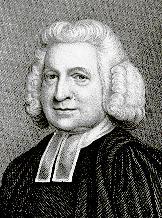- |
User Links
New Year's Day

Come, let us anew Our journey pursue, Roll round with the year
Author: Charles WesleyPublished in 516 hymnals
Printable scores: PDF, MusicXMLAudio files: MIDI, Recording
Representative Text
1. Come, let us anew our journey pursue,
Roll round with the year,
And never stand still till the Master appear.
His adorable will let us gladly fulfill,
And our talents improve
By the patience of hope and the labor of love,
By the patience of hope and the labor of love.
2. Our life as a dream, our time as a stream
Glide swiftly away,
And the fugitive moment refuses to stay;
For the arrow is flown and the moments are gone.
The millennial year
Presses on to our view, and eternity’s here,
Presses on to our view, and eternity’s here.
3. Oh, that each in the day of His coming may say,
“I have fought my way thru;
I have finished the work thou didst give me to do.”
Oh, that each from his Lord may receive the glad word:
“Well and faithfully done;
Enter into my joy and sit down on my throne;
Enter into my joy and sit down on my throne.”
Source: Hymns of the Church of Jesus Christ of Latter-day Saints #217
Author: Charles Wesley
 Charles Wesley, M.A. was the great hymn-writer of the Wesley family, perhaps, taking quantity and quality into consideration, the great hymn-writer of all ages. Charles Wesley was the youngest son and 18th child of Samuel and Susanna Wesley, and was born at Epworth Rectory, Dec. 18, 1707. In 1716 he went to Westminster School, being provided with a home and board by his elder brother Samuel, then usher at the school, until 1721, when he was elected King's Scholar, and as such received his board and education free. In 1726 Charles Wesley was elected to a Westminster studentship at Christ Church, Oxford, where he took his degree in 1729, and became a college tutor. In the early part of the same year his religious impressions were much deepene… Go to person page >
Charles Wesley, M.A. was the great hymn-writer of the Wesley family, perhaps, taking quantity and quality into consideration, the great hymn-writer of all ages. Charles Wesley was the youngest son and 18th child of Samuel and Susanna Wesley, and was born at Epworth Rectory, Dec. 18, 1707. In 1716 he went to Westminster School, being provided with a home and board by his elder brother Samuel, then usher at the school, until 1721, when he was elected King's Scholar, and as such received his board and education free. In 1726 Charles Wesley was elected to a Westminster studentship at Christ Church, Oxford, where he took his degree in 1729, and became a college tutor. In the early part of the same year his religious impressions were much deepene… Go to person page >Text Information
| First Line: | Come, let us anew Our journey pursue, Roll round with the year |
| Title: | New Year's Day |
| Author: | Charles Wesley |
| Meter: | 10.5.11.10.5.11 |
| Language: | English |
| Copyright: | Public Domain |
Notes
Come, let us anew, Our journey pursue, Roll round, &c. C. Wesley. [New Year.] This popular hymn is much used by the Methodists at their Watchnight and Covenant Services, and is widely known in all English-speaking countries. It was first published as No. 5 of 7 hymns in a penny tract, entitled Hymns for New Years Day, mdccl., and is in 3 stanzas of 8 lines (Poetical Works, 1868-72, vol. vi. p. 14). In 1760 it was adopted by M. Madan, in 1776, by Toplady, and later on by others in the Church of England; by J. Wesley in the Wesleyan Hymn Book, 1780, No. 45, and by Nonconformists generally.
--John Julian, Dictionary of Hymnology (1907)
Timeline
Media
- MIDI file from The Cyber Hymnal #897
- MIDI file from Gloria Deo: a Collection of Hymns and Tunes for Public Worship in all Departments of the Church #579
- Audio recording from Harmonia Americana: containing a concise introduction to the grounds of music; with a variety of airs, suitable fore divine worship and the use of musical societies; consisting of three and four parts #57
- MIDI file from Songs of Faith and Triumph 1, 2 and 3 Combined: Tryout Edition #22a


 My Starred Hymns
My Starred Hymns

